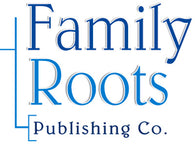
QuickSheet: The Historical Biographer's Guide to the Research Process
QuickSheet: The Historical Biographer's Guide to the Research Process; by Elizabeth Shown Mills; 4 pp. folded; Laminated; Published: 2012; 8.5x11; ISBN 9780806318929; Item GPC3867
Building on a lifetime of experience, Elizabeth Mills argues that successful research can be achieved by following four specific models:
- The Research Process Model
- The Research Analysis Model
- The Identity Triangulation Model
- The Reliability Model
The first of these, the research process model, involves several indispensable steps: analyze the problem, place it in legal and social context, identify related and associated individuals, identify relevant resources, identify pros and cons in their use, and, finally, develop a research plan. The second model--the research analysis model--contains this simple bedrock principle: Sources provide information from which we select evidence for analysis. A sound conclusion may then be treated as “proof” until and unless new evidence emerges to the contrary.
The third item in the research process is the triangulation model, which states: Identity is more than a name. It is every known detail of a human life. Identity is determined by triangulating three things: persona, relationships, and origin. Finally, the capstone in the research process, the reliability model, offers this principle relating to proof: Proof is not a source or a citation. It is a body of evidence accumulated in the process of research and analysis, and is arrived at by problem analysis, research, documentation, record analysis, correlation, conflict resolution, and explanation of evidence and conclusions.
If the objective of research is to reach conclusions and establish proof, this QuickSheet will get you to your goal with absolute confidence.
